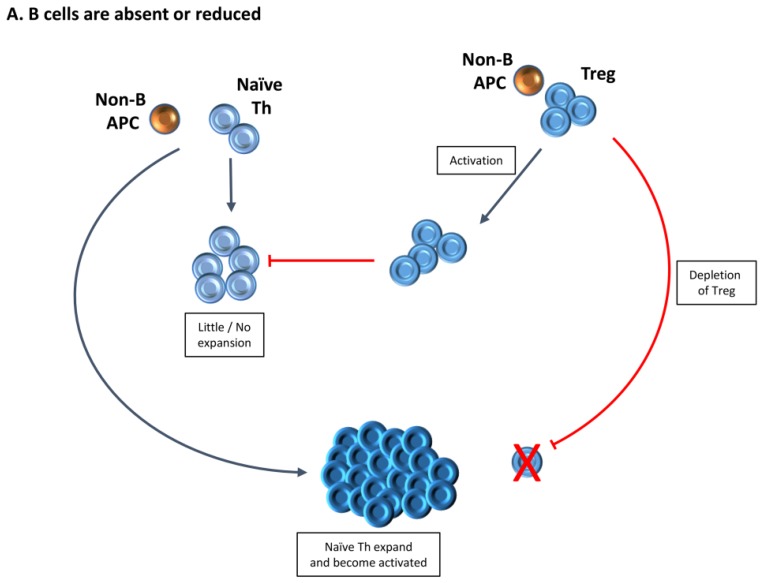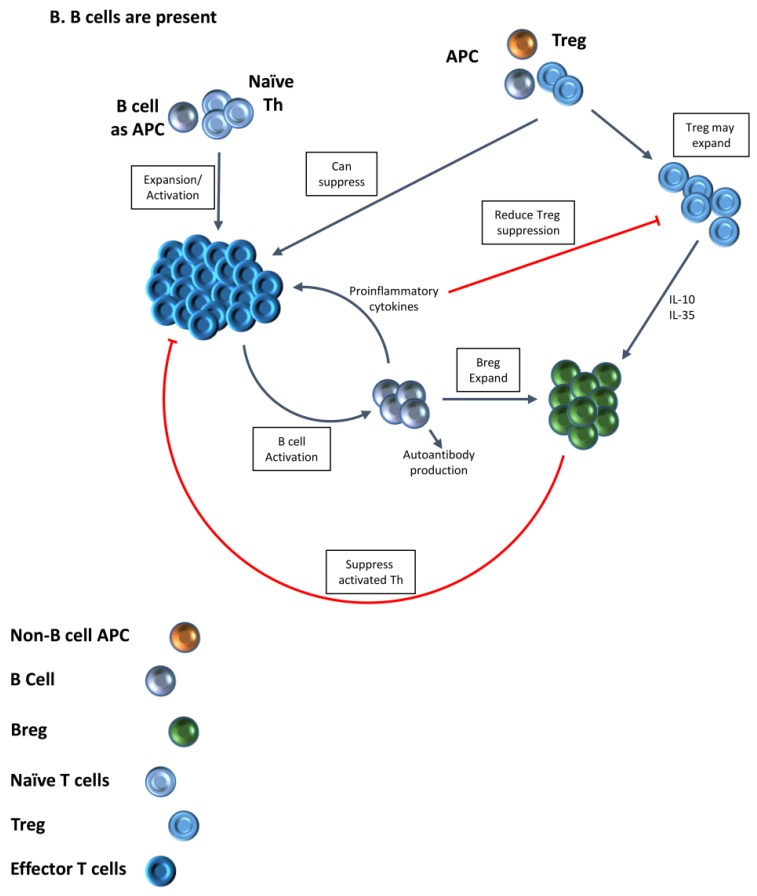Figure 3.
Interactions between Treg, B cells and effector T cells (Teff) in development of autoimmune diseases. (A) When B cells are absent or reduced in number (e.g., after anti-CD20 treatment), B cells are not available to present autoantigen. Presentation of autoantigen by other antigen-presenting cells (APC) results in little expansion or activation of naïve T helper (Th) cells and they do become Teff. However, Treg may expand and they are activated, and autoimmune disease does not develop because Treg activity is dominant. When Treg are depleted, presentation of autoantigen by non B cells leads to activation and expansion of naïve Th, they become Teff and autoimmunity develops; (B) B cells are present and able to function as APC. Naïve Th expand and become activated. Presentation of antigen to Treg may also lead to their activation, but Th activation is dominant. Suppression by Treg is insufficient to prevent autoimmune disease. Over time, Treg can produce Interleukin (IL)-10 and IL-35 leading to expansion of B regulatory cells (Breg) which suppress activated Th and effector B cells. Expanded Th produce proinflammatory cytokines and interact with B cells to promote their activation and production of autoantibody. Proinflammatory cytokines produced by B cells can also interfere with Treg function and/or activation, rendering suppression by Treg less effective. The dominant outcome is autoimmune disease.


